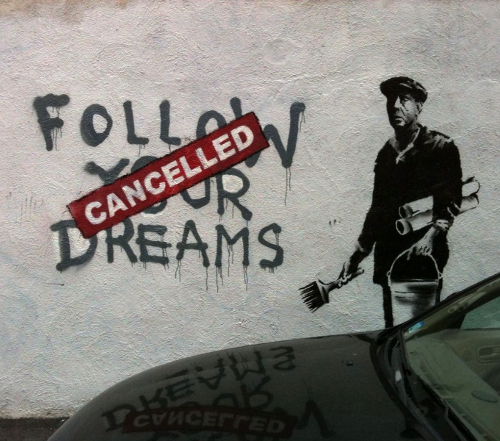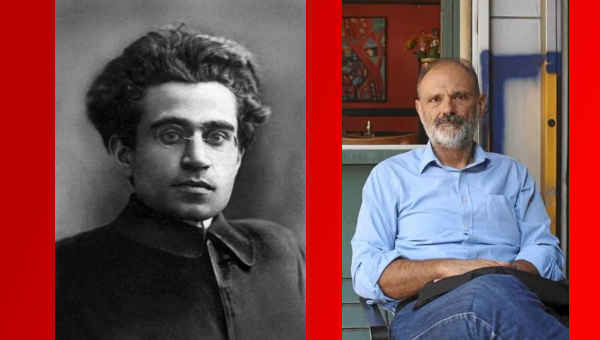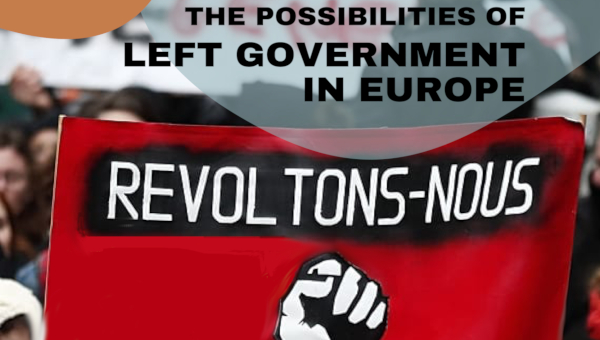Transnational Echoes and Blocked Transformations
Triggered by the Arab Spring (LuXemburg 1/2011), a series of transnational movements, such as the Indignants and Occupy Wall Street, began gathering pace in 2011 in Europe, Turkey, the U.S., Chile and Brazil. The events are being driven by an urban precariat that is better educated than ever before. Time and again, spaces open up for protests and organizing. Time and again, events underway in one place begin echoing in another, transnational connections spring up and solidarity comes to the fore. This recently happened almost simultaneously in Athens (Völpel, 2013), in Istanbul’s Gezi Park (Tugal, 2013; Hammond/Angel, 2013;) and in other cities throughout Turkey and Brazil (Richmond, 2013; Dilger, 2013).

Although this first cycle of protests achieved an enormous amount (cf. Candeias/Völpel, 2013), it has also exhausted itself. The social mobilization that it helped bring about is fizzling out, or rather, is seeing its transformation blocked the world over. Governments and dominant groups are pressing ahead, unperturbed and supported by their structural and transnational power, with their short-sighted austerity policies. The broad, diverse currents of civil-society organizing cannot reach the solid institutions operated by those in power (Porcaro, cf. the Occupy Lenin debate, Volumes 1 and 2/2013). The structural weaknesses of the movements mean that “they can take control of squares, but
cannot hold them” (Kastner, 2012, 81). This form of organizing has failed to endure: from New York to Madrid, from Cairo to Istanbul,
the central camps have been cleared away. In none of those cases did this spell a premature end for the movements. Given the unfavourable
conditions and all-powerful opponents they faced, this could well have been the case. But, surprisingly, they have not disappeared.
They have survived and are now reorganizing themselves. In doing so, they must reorient their strategy – and keep their eyes firmly on the headquarters of power.
Molecular Organizing
As the international organizations and transnational meetings of powerful groups like the World Trade Organization (WTO) and the G8 have weakened, so the anti-globalization movement
within the movements (or its tradition of acting as a symbol of resistance) has worn itself out from summit to summit. The same is true of the lively meetings and exchanges within the social forums – Germany’s failed early on, then Europe’s, and even the World
Social Forum has yet to bring about a revival. The new movements are barely visible. Their international jet-set are struggling to link
the discourses with the regional debates happening where the meetings are being held. And, in view of the crisis of neoliberalism, a sense
of helplessness surrounds the question of strategy: how can we follow through on the discussions held within the forums, and how can we turn these, at least in part, into a tangible, unifying position?
Successful failure has always been the most important type of movement for the left. This is either
because the major achievements brought about by passive revolutions were always compromised and integrated into increasingly capitalist
forms of government and socialization, or because promising movements
and groups lost battles, were violently defeated, saw their momentum
fade, and fragmented as some parts became marginalized, others integrated. And yet, the efforts of the individual changed, were
continued, laid down roots. Their experiences and yet-to-be-achieved goals have not disappeared. Innovations are underway.
Just as the anti-globalization movement worked its way around the world, from Seattle to Genoa to Barcelona, following the summits held by the powerful and allowing
hundreds of thousands of people to experience what it felt like to be part of a transnational movement, so the cycle of a new (pro-democracy) movement is beginning, under altered conditions, to spread around the world and create echoes in entirely different
contexts. It does not follow the rounds of international negotiations, and it is not organized in a particularly global way.
Instead of functioning in a distinct transnational network, the new (pro-democracy) movements are on a more indirect path and, given the
advanced stage of globalization and crisis, are spreading on the waves of transnational echoes. The mobilization is based on local circumstances and is often more organized on the ground than the anti-globalization movement was. In many countries, it has also gone
beyond left-wing circles and is much more securely anchored in broad sections of the population. The groups are learning at a transnational level. They refer to one another and use the same symbols and methodologies, adapted to fit the local situation and
moment in time. This was reflected in the camps and in their direct-democratic social models.
However, discussions of the new (pro-democracy) movements limit themselves all too often to the squares and camps, to the events unfolding in this space, this
Erscheinungsraum, where people can be seen talking to and engaging with each other (Rehmann, 2012, 899).[1] Much less attention is paid to the “rhizomatic network” (ibid.), i.e., the vast array of vibrant relationships that the squares have
to other movements and organizations (and, beyond that, to social power relations as a whole). This network gives the Erscheinungsraum its significance in the first place, because it is here that its social impact (beyond the small circle of those in the camps) truly comes to light.
The new movements seemed like “giant echo chambers” (Waibel, 2012, 109), initially mere “empty signifiers” (Lacan), a cry of outrage and a call for “real democracy” (Real Democracia ya!). They were definite, and yet vague enough for the different, fragmented initiatives and directions to
rearticulate themselves and come together anew. Occupying the squares created the space the isolated groups needed to step out of their individual social contexts, niches and scenes and link up with one another.
Organic collaborations allow the new movements to expand sociologically (beyond their own well-educated precariat) and geographically (beyond the cities) and
to reach a broader body of advocates and supporters (Rehmann, 2012, 900). I use the word “organic” because, in contrast to events
like the union protests in Seattle in 1999, these were not the tactical or strategic partnerships that exist within fully formed
movements or organizations. Rather, they were about individual parts engaging with other parts in an ongoing process where a movement is forming and everyone’s ability to take political action can be strengthened, specific interests can be brought together in new
combinations, and solidarity can flourish. This was possible because, in addition to the many young people supporting the movement, numerous local initiatives, left-wing groups and
grassroots trade union organizations became part of the movement at the beginning. This has also revived and reoriented the practice of organizing within the old left-wing movements, the unions and left-wing political parties. The Tahrir generation is coming into contact with the Seattle generation (Atentas/Vivas, 2011, 19) and with those of the old “new social
movements” and the workers’ movement. The mobilization is running through every group, regardless of age.
Given the organic nature of the collaborations, it makes little sense to separate out the different groups. They extend far beyond the
activists themselves, and millions of people now see that they can stand up and oppose the status quo. Millions of people who had never engaged in politics before, or who no longer expected to achieve anything with political work are now getting involved and protesting.
This has created a momentum that is not so much a “new social movement,” of the kind that is defined in poor sociological terms
(against nuclear power or for better study conditions at universities), as a social mobilization.
Once the squares were cleared, people built on the organic collaborations that existed during the occupations and changed their strategy in a way that (initially)
secured the movement’s survival and ongoing development. It scattered into the neighbourhoods without dissipating entirely. From
there, the mobilization was able to expand and begin addressing specific problems by fighting evictions (e.g. Spain and the U.S.),
building active solidarity networks for healthcare and food (Greece), providing direct aid in the wake of disasters (Occupy Sandy in the
U.S.), and taking industrial action in the public sector (e.g. the wave of protests in Spain and the fight for the state broadcaster in Greece).
Instead of having a centre, this kind of molecular organizing, which has been happening in numerous different places at the same time, is the
product of coordination and communicative structures. Inter-neighbourhood commissions (such as those existing in Spain) and other, sometimes internet-based, links in the chain organize the coordination between local groups, and with the various specialized
groups and other initiatives. People meet and share information at countless assemblies and meetings. The different campaigns are coordinated among themselves and with the mass demonstrations and
general strikes. But despite all this, it remains incredibly difficult to keep the mobilization going. It is being shattered by
the bastions of (transnationalized) power. Fragments of the movement are dissipating once again, and wide-reaching connections, such as those created by Occupy Wall Street, are being torn apart. Everywhere it looks, the movement has new strategic tasks to address.
A Blocked Arab Spring
North Africa’s “storming of the Winter Palace” was possible because the regimes there had almost no way of bringing the masses together, they could not draw on
a well-developed civil society, and the transnational bloc that had supported them for so long did not seem especially interested in
getting involved. When the people began to rise up, all that the regimes could do was try and repress them. But the military, which in
Egypt and Tunisia was intertwined with the powers-that-be, had to worry that it would be dragged down with them if the riots won out.
The fissures in the power bloc eventually cracked it. The military secured its influence by sacrificing the potentates and creating a
new bloc – all designed to keep the revolution passive and stop any more-radical changes occurring. The situation in Egypt and Tunisia benefited from the transnational neoliberal bloc supporting the
possibility of formal democratization. It felt that it was possible to live with the dictators, and hoped that “free and democratic” market economies would make it easier to do better business.
But, as we all know, Tunisia’s revolution brought to power the Islamic groups that had not been part of the uprising. So far, neither Tunisia’s unions, nor its old
left-wing and liberal organizations, nor the numerous new networks and circles involved in the movement have been able to formulate an
organizational response to the power held by the Ennahda party. The movement needs to work out how to extend beyond specific urban groups
to reach the majority that live in rural areas and incorporate them into an alternative project. Furthermore, splitting Islamists and
secularists up into opposing poles ignores the social problems, the poverty and lack of prospects that triggered the revolution in the
first place. Oppositionists like the left-wing politician Mohamed Brahmi are being murdered while the process stagnates. The work of
the constituent assembly has been suspended. The National Salvation Front, an alliance of opposition parties, is criticizing the
government for its mismanagement and the current stalemate and is urging it to step down. The influential unions within the Tunisian
General Labour Union (UGTT) are trying to act as mediators. Elections could be held at the end of this year, but it remains to be seen whether the opposition can secure a majority.
The polarization caused by Morsi’s authoritarian regime in Egypt drove the reorganization of the revolutionary movement forward without sweeping the unanswered
questions surrounding poverty and economic deprivation under the carpet. The Tamarod (“rebel”) movement addressed the
self-inflicted paralysis in the alliance of left-wing and liberal groups and parties and succeeded in remobilizing opposition to
Morsi’s government. On 30 June 2013, six months of impressive activity and organization culminated in mass demonstrations that were
described as being able to “scare any party in government and any ruling class” (Savran, 2013). When the Egyptian army under General
al-Sisi removed Morsi – Egypt’s Islamic-oriented leader who was elected in superficially democratic elections (still a big step
forward after 30 years of dictatorship) – from office, it not only prevented economic collapse and a possible civil war, but also the impending continuation of the 2011 revolution. If the situation had
escalated again, it would have led to a fresh round of elections and a possible victory for the opposition and would have called the army’s political and economic power into question. But large
sections of the population welcomed the “Bonapartist coup”
(ibid.) because it overthrew the common Islamic enemy. Do they expect that this strike against reactionary religious groups will support the revolution by weakening the Muslim Brotherhood, one of the “main
enemies of the revolution” (Al-Chamissi, 2013)? Even during the
short time that Morsi was in office, the army improved its standing as the guardian of the nation. It won itself another helping of credibility when it staged the coup, an event that got people chanting “the army and the people are one hand” again.
But the military also has an authoritarian side, as demonstrated by its brutality and the hundreds who have lost their lives at its hands.
Egypt’s emergency law, which was one of the targets of the 2011 revolution, has been re-enforced. The coup was actually directed
against the goals of the revolution, and the army is seeking to restore civil-military rule. It seems that al-Sisi is not especially
interested in the army playing a mediatory or protective role on the democratic playing field. Rather, he appears to be aiming to seize power by reorganizing the civilian branch of the military and putting
himself at the top (Herrmann, 2013). This process could build on a neo-Nasserist ideology that incorporates El-Baradei’s liberals and
Hamdeen Sabahi’s left-wingers – though without the pan-Arabist and socialist orientation of the Nasserism of old. This means that
the revolutionary groups are currently stuck between the mass Islamic movements on the one hand and a renewed military-based regime – behind which secular and Islamic groups are gathering – on the
other. The state’s repressive measures and its curfews are making it hard to organize protests, and society is deeply divided. We can only hope that Sungur Savran is right when he says that the revolutionaries and whole swathes of the population “are full of self-confidence and a belief in their own strength” (2013). They
are standing at the edge of the third phase of the revolution, a time when they must reorganize themselves anew.
Difficulties on the Way to Restructuring
In Istanbul, the AKP’s increasingly authoritarian regime also led to a wave of protests. The unrest was triggered by a seemingly unremarkable matter: plans to cut
down five trees in Gezi Park to make way for retail development on
the city’s central Taksim Square. Inspired by similar occupations
around the world, Occupy Gezi was also an empty signifier that allowed people to express their increasing sense of discomfort and
manifest dissatisfaction. Here again, it was not the usual suspects who gathered to make their voices heard, but a new generation of the
urban precariat. They did, however, quickly earn the support of every
other generation. It was astonishing to see so many older people involved in the demonstrations and, in particular, taking care of the
protesters. As had happened in other places, the gatherings in Taksim Square became a meeting place for previously isolated groups and
stark cultural differences. These included a disorganized, subcultural, “post-political” scene, organized cadre splinter
groups, LGBT activists, old-time left-wingers, supporters of the Kemalist CHP party and the “Anti-Capitalist Muslims” group, to
name just a few. The protests spread extremely quickly, partly thanks to the government’s overly harsh attempts, which included using tear-gas, to repress the groups. Over the ten days of the resistance movement, 77 towns and cities held demonstrations and occupied squares of their own. Millions of people came out in support of them
(cf. Occupy Gezi, LuXemburg 2/2013). The events were also a wake-up call for opposition parties, in particular the Kemalist CHP and the left-wing Kurdish BDP.
But the squares – like all those that had gone before – were cleared and the demonstrations quashed. Once again, the mobilization scattered into the
neighbourhoods. Public forums are being held in parks all over Istanbul and in other towns and cities throughout the country. The
protest is being shifted into everyday life, e.g. with fast-breaking
meals held on the streets, cocktails against Erdogan (and against his
alcohol legislation) innovative rallies, an explosion in street art and a wedding with gas masks held in Gezi Park.
The forums that are being held in the parks and via social networks are creating space for discussing how to reorient and reorganize the mobilization. Given that the
government is securely anchored in large sections of the population (especially in rural areas), how can the movement maintain its
momentum or how can it transform the energy into something new? Some dream of founding a new political party, but given the heterogeneity
of the movement this would surely be an overly hasty move. A much
more promising approach is to focus on the upcoming municipal elections. A number of different groups are currently trying to work
out whether a combined approach would be feasible. A lot will depend
on whether the meetings create scope for forming new alliances. The
crucial factor here is the future relationship between the two
opposition groups with the greatest numbers behind them: the still
staunchly nationalist Kemalists and the Kurdish movement. Perhaps,
thanks to the momentum generated by Gezi, it will be possible to
agree on candidate nominations in the various neighbourhoods. Perhaps it will also mean that the popular left-wing politician Sırrı Süreyya Önder, a member of the BDP who was injured in the Gezi Park
protests, will have a chance at winning the mayoral elections in Istanbul.
Abdullah Öcalan, who is still a key point of reference in the Kurdish movement, is advising it to overcome its scepticism and open itself up to the protest movement.
He has even gone so far as to recommend thinking about dissolving the old party framework so that it can fully engage with the reorganization of the left. The left is trying to form an overarching platform, the HDK (Halklarin Demokratik Kongresi, or the
People’s Democratic Congress) that includes the BDP and 15 other parties and organizations. It began these attempts two years ago, and
the momentum created by the protests has probably improved the conditions it is working under. Nevertheless, the HDK not only needs
to overcome the splintering of the political left, but also find a way to organically integrate the interests and political models that
exist in the protest movement. In other words, instead of seeing itself as a representative of the movement, the HDK must be the place
where it is organized, a sort of institutional backbone that maintains close ties to the public forums. The HDK has founded a
party, the HDP, so that it could participate in the municipal elections. This will allow the HDK to continue to function as a
platform while the HDP and BDP can field candidates for western and
eastern Turkey, respectively. This is less about reaching the headquarters of power than about just winning back effective forms of organization and institutional anchors in the municipalities.
Outrage Fizzles Out
The successful mobilizations in Spain, Portugal and Greece led to, among other things, right-wing governments being elected to office. Their leaders are now taking an
extremely tough approach to pursuing austerity policies, cutting labour and social rights and pressing ahead with privatizations. Mass
protests are the order of the day. General strikes and large-scale demonstrations are attracting millions of people, with over a quarter
of Portugal’s entire population coming out onto the streets. Surveys also suggest that the protests enjoy enormous support and
approval from the rest of the population, and (beyond seeing themselves as horizontal, direct-democratic alliances) are assuming a
representative function with much more vigour than the parties can muster. Most newspapers are also filled with articles denouncing the
troika and its imperialist policies, the incompetence of their own governments and soaring levels of corruption. Spain’s ruling Partido Popular (the People’s Party), for one, has become entangled
in a funding scandal of unprecedented proportions and support for the government has sunk to a record low. In Portugal, the constitutional court has rejected the government’s austerity plans. The country’s ruling right-wing coalition keeps reshuffling itself in an effort to avoid falling apart. An anti-government stance is even starting to
build within the military and the police. The current situation is reigniting memories of the 1974 revolution, and every demonstration
rings out with the old protest songs. Yet, false hopes are out of the
question. Both governments have been severely weakened, but though they are wobbling they show no signs of falling. Transnational power is holding them up. An authoritarian neoliberal constitutionalism
within Europe is dispensing with the need for consensus and democratic standards and – considering the damning economic results
– is governing with the help of ruling classes that are regressing to the days of the comprador bourgeoisie and quite literally selling their countries out.
The movements are trying to reorient themselves. It is no longer enough to conquer civil society, occupy squares, take over the streets, stage symbolic actions,
prevent evictions and win citizens’ initiatives. Instead, they are focusing on a proceso desconstituyente (disconstitutive process), which aims to overthrow the government and dissolve
parliament. “A lot of people are starting to think that seizing institutional power is important again. But then there’s also a big part of the movement that wants nothing to do with it” (Ruiz, 2013). The fight for the headquarters of power will determine the future of the movements.
Their efforts are not so much about (re)organizing a new kind of party as about forming a frente cívico (civic front), which does not aim to govern the country.
The crucial factor here will be whether the different elements that make up the movement – the unions, the Izquierda Unida (IU) and the regional left-wing nationalist parties – can communicate enough to
achieve shared strategic goals. In its latest manifesto,[2] the 15-M Movement, along with other sections of the broad social mobilization (initiatives, union members, right up to the IU), says
that discussions on beginning the process of convening a constituent assembly are underway. The process links this to the new movements
for real-democratic political models of horizontal and diagonal consulting and organizing in the neighbourhoods and regions, and at
the national and, perhaps, European level. Instead of seizing executive power, the social mobilization (the constituent power) aims
to re-establish the social institutions (the constituted power). But so far, this process seems to be making little headway. Portugal will
hold municipal elections soon, and maybe national elections in June, but it remains unclear what should happen if the government is toppled. The Communist Party, the Left Bloc and the Socialist Party have no prospects of forming a joint government. The alternative civil-society processes are not properly developed. Beyond the impressive demonstrations, organizational structures are sorely lacking.
Can You Seize Power Without Changing the World?
Greece’s government has also been weakened. The leftist, social-democratic party Dimar pulled out of the coalition in response to the surprise closure of the state
broadcaster and to the mass protests that followed. That has left the government with a wafer-thin majority in parliament.[3] It is very likely that a new round of fighting and strikes, combined with the lack of an economic upturn, will plunge the remaining
coalition, made up of the conservative Nea Dimokratia (ND) and the social-democratic Pasok, into severe difficulties. Some observers suspect that the ND could enter into a coalition with a breakaway group formed by members of the fascist Golden Dawn party. The ND
itself has suggested founding a new centre party, although it remains unclear which groups it would include and what section of the electorate it would target.
If the current coalition were hit by another crisis (though this is hard to predict at the moment) that triggered a fresh round of elections, it would raise the question of
whether a left-wing, Syriza-led government might be voted in. As things stand, Nea Dimokratia and Syriza are neck-and-neck in the
polls. Pasok is down at around seven percent, which means the ND is in danger of losing its coalition partner – though Syriza would also be on the lookout for one.
Syriza acts as a kind of concentration point: it takes the many civil-society activities involved in self-organizing and protesting, combines them and
translates them into real prospects for getting into power. “And yet, the scope for taking action within the existing institutions is
likely to be tiny. There is little chance of the troika or the international financial markets loosening their grip – quite the
opposite. Syriza knows very well that it is impossible to seize power
without changing the world” (LuXemburg, 1/2013, 146). A potential
left-wing government is wedged between authoritarian European constitutionalism, and a bureaucratic machine powered by Pasok and
Nea Dimokratia’s clientelism, and must reckon with capitalist measures driving the country even deeper into its economic crisis. It
will not be enough to reject and renegotiate the memoranda, introduce
capital controls, and continue developing a comprehensive programme for government. If there is no fundamental challenge to the status
quo, if no new institutions are created, then even Syriza has no chance of forming a government.
The government would have to refuse to govern on a traditional basis. For this to happen, an emergency social and economic programme should immediately be
combined with a move that abandons the status quo and brings large sections of the population together in a process of collective
reorganization. The aid networks and organizational processes that are based on solidarity have created the civil-society hubs needed
for this to happen (cf. Wainwright, 2012). However, it remains unclear whether they will be enough to support a left-wing government
during a crisis-plagued transition. There is also a need for strong international solidarity and similar processes in other countries.
Everyone is Fighting in Their Own Corner
Europe has begun fighting again, but it is difficult to coordinate the individual battles across the region. Given that each one is operating under very different
conditions and is determined by numerous causes at once, the lack of coordination is inevitable. Nevertheless, while it is impossible to
adopt a one-size-fits-all strategy, it does make sense to seek out common starting and concentration points.
Numerous left-wing parties in Europe have expressed solidarity with Greece. The Left Party in Germany, for instance, has made a big effort in this regard and has
drawn up a joint declaration with Syriza. However, there are currently no signs of the European left adopting a joint position.
Left-wing parties in southern Europe are discussing a shared
strategic position and perspective. As things stand, communication with their northern counterparts needs further development.
The situation regarding solidarity between Europe’s unions is proving especially dramatic. The European Trade Union Confederation is not suited to acting as a
coordinator because the individual interests of its member associations and unions are too strong and the conditions in each
country vary too much (cf. Wahl, A., Volume 1/2012). On 14 November
last year, the confederation took a historical step, the likes of
which had never been seen before: a number of European countries held
general strikes and others engaged in shared demonstrations of
solidarity. But in particular German unions, such as IG Metall, are
torn between their opposition to neoliberal austerity policies and
the advantages that they enjoy from being part of the country’s
crisis management, and that come at the expense of other groups of
wage-earners. Germany’s unions barely participated in the general
strike and associated demonstrations (cf. Bierbaum, 2013). Some parts
of the unions (such as the economic policy division of ver.di’s
national executive board) did, early on, communicate their criticisms
to the European Union and declared their solidarity with Greece. But
they didn’t start courting public attention until relatively late,
when one group issued an official appeal entitled Founding Europe
Anew!, and the Confederation of German Trade Unions (DGB) published
its Marshall Plan for Europe. Neither of these declarations have had much practical effect.

But even the Indignants and Occupy movements are struggling to coordinate their protests across Europe. Their fight is mostly limited to the national level, and although it is starting to take on a cross-border character, the process is slow and sporadic. In most cases, the groups lack the
necessary strength. The learning curves that lead to a practical form
of solidarity are hard to climb – though they are not without chances
of success, as was demonstrated by the coordinated days of action
that were held in May 2012 to mark the anniversary of the occupation
of Puerta de Sol in Madrid and Blockupy Frankfurt. They also include
cooperation between new (pro-democracy) movements, “new-old”
social movements, left-wing parties and unions. Countless meetings –
some small, some large, from Florence 10+10 and the Alter Summit in
Athens to the many Agora meetings, joint days of action, conferences
and workshops – are being held to discuss contradictions and problems and to exchange strategies and approaches to raising specific issues.
What might the concentration points for a transnational form of organizing be? The opening of the new ECB building in Frankfurt in 2014 and the corresponding round of Blockupy protests could take on an important symbolic role. Even more important than the protests themselves is the process of organizing them, which could create a regular, transnational space for discussing joint strategies and action.
National and European debt audits and bottom-up constitutional processes (Candeias, 2013a, 146f) are still on the agenda among relevant parts of the movement, though efforts to create the necessary momentum for them have so far failed. As important as these issues are, the majority is more passionate about addressing the everyday battles that the precariat faces, and
individual and social reproduction in healthcare, education, food and
housing. The fight against evictions, displacement and neoliberal urban restructuring plays a crucial role in every mobilization, whether it is happening in Istanbul, Berlin, Detroit or Madrid. In Spain, the organizations that fight these battles are an institutional and strategic backbone for the whole mobilization (Ruiz, 2013), and they have chalked up some substantial initial successes (Candeias, 2013c). Here in Germany, mobilizations against evictions and initiatives like Kotti&Co (cf. LuXemburg 4/2012, 92
ff.) are hopeful signs from a nation that does not have an especially
active protest culture. How can these local battles be linked together in a transnational network? Joint days of action are a
start. A European citizens’ initiative (ECI) against evictions and
displacement would probably be a good way of providing support in the run-up to the European elections. The first ECI – against privatizing water supplies – was successful and has forced the
Commission to address its demands. Providing that this kind of initiative is not confused with the movement itself, and instead exists side-by-side with it in an organic relationship, it can play
an important role in generating momentum for a mobilization. The unions within the Confederation of German Trade Unions are currently
working with sister organizations throughout Europe on plans to launch a citizens’ initiative for a Marshall Plan for Europe (LuXemburg 2/2013).
A crucial difference between an ECI and the strategies, like the PAH in Spain, that the movements use for preventing evictions, is that an ECI aims to assert a single, specific demand. The PAH, for instance, is organizing its resistance to evictions as part of efforts to extensively restructure the left
and bring about further-reaching change for the whole of society – transformative organizing in the truest sense. Although every individual success is important in itself, it will come to nothing if
it does not also strengthen the ability of the majority to take action and increase the movement’s organizational power, so that it
can then set its sights on the headquarters of transnational power in Europe. A transnational, diagonally negotiated, bottom-up constitutional process would be an important concentration point for a constitutive process. But first there needs to be a disconstitutive process, an effective break with the status quo, at the European level. It is unlikely that this will happen at the transnational level right away.
To be clear, transnational organizing is desirable. But it will probably only be facilitated – created, even – by an event that results in just one country breaking with the status quo. This might be a left-wing government in Greece that rejects the troika’s austerity policies, calls for fresh negotiations and debt relief, introduces capital controls, etc.
Politicians have to take the risk of violating EU guidelines. Others will follow, and the next step will be to expand the reforms, which have already begun in one or more countries, throughout Europe. As
things stand, however, only Greece seems to have a realistic chance of this happening; and the country’s leaders are doing all they can to isolate this kind of stance. Given that the governments in Greece,
Spain, Portugal and Italy could well fall, a possible alliance of the southern left is starting to seem realistic. Such an alliance would obviously affect left-wing movements and parties, but it would also
be an opportunity for social democracy to lift itself out of the dire straits it is currently in. If combined with widespread mobilization and organizing in Europe, this national-transnational approach to
changing the balance of power and to questioning existing institutions can open up whole new horizons. It can topple the headquarters of transnationalized power. The molecular transnational organizing, from the local to the European level, has at least begun preparing the ground for this to happen. Such a break with the status quo would need to be incorporated into a bottom-up constitutive process using the council-like political models (that fit in with the new movements for real democracy) of horizontal and diagonal consulting and organizing in the neighbourhoods, regions, countries and Europe. •
Thanks to Tadzio Müller for the title of this article. I am also grateful to Murat Cakir, Corinna Genschel, Kadriye Karcı, Anne Steckner, Tanja Tabbara, Corinna Trogisch, Silke Veth, and many others, for their helpful suggestions and discussions.





